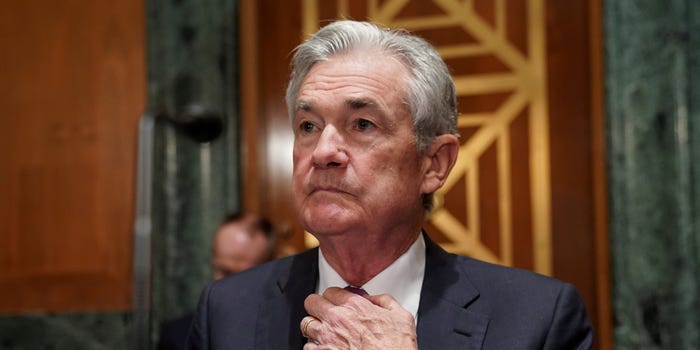The Federal Reserve has finally recognised the obvious: the inflation we are experiencing is due to supply chain and labour market issues caused by government responses to the pandemic. The OECD concurs.
Earlier this week, the head of the Fed, Jerome Powell, said that:
Finally! Only a few weeks ago, drawing a link between inflation and government Covid-19 responses was, as the Germans say, Streng Verboten — strictly forbidden. So what explains this delayed admission?
Parsing the commentary closely, a new narrative seems to be emerging. We might call it the ‘pandemic inflation naturalistic fallacy’. Powell seems to assume that because the inflation is a result of the virus, it will subside once the virus does. But this rationale is based on the vaccine programme coming to the rescue. Powell likely believes that the vaccines will, at some point, end the pandemic and so we should simply tolerate inflation until then.
This does not fit with the evidence that is emerging. We have known for some time that the vaccines are relatively ineffective at stopping transmission, especially given the rapid mutation of the virus. Since case numbers are the metric that we use to promote economy-damaging policies, it is hard to see the vaccine helping here.
Even if we assume that the vaccine programme will reduce the number of Covid deaths and hospitalisations, it is not proving as effective as was hoped. Consider central Europe. Austria and Germany have fully vaccinated 87% and 86% of their vulnerable populations respectively. Yet the number of Covid deaths in the latter looks roughly the same as it did at the beginning of last winter, pre-vaccine. Austria, meanwhile, is on a similar trajectory based on week-on-week growth.
Why can the Fed not see that the vaccines are not working as promised? They can pretend that the virus gives them an excuse for the inflation only insofar as they assume that the virus will soon disappear. If it does not, then the Fed’s official position can be read as saying: “Accelerating inflation is fine because it is ‘natural’”.
Economists are eventually going to have to face up to it: the economy and the public health measures are completely at odds with each other. Once they face up to that, they will have to recognise that it is their job to say this explain to the public that there are huge trade-offs between these endlessly extending restrictions and general prosperity.











Join the discussion
Join like minded readers that support our journalism by becoming a paid subscriber
To join the discussion in the comments, become a paid subscriber.
Join like minded readers that support our journalism, read unlimited articles and enjoy other subscriber-only benefits.
Subscribe